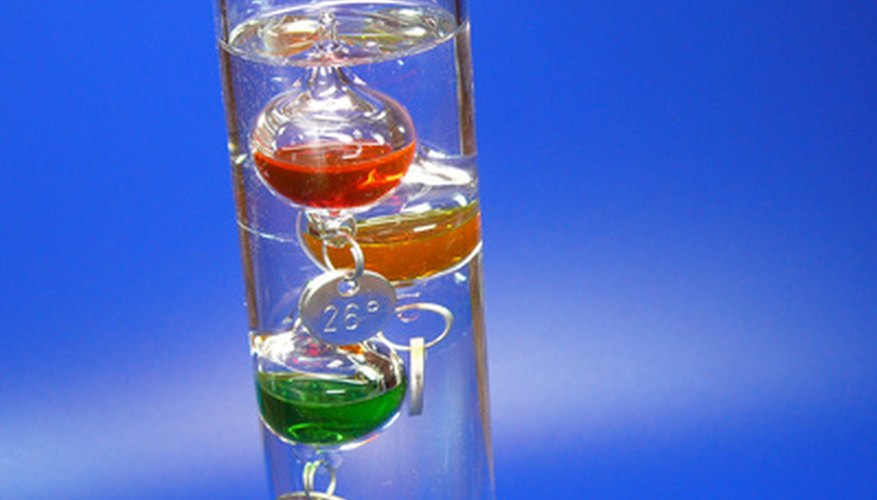The Galileo thermometer is named after Galileo Galilei, an inventor who lived from 1564 to 1642. The Galileo thermometer does not use mercury, but instead relies on the density of liquids to tell the temperature. Each glass ball in the thermometer is filled with a liquid and attached to a metal weight with a numerical value. As the temperature outside the thermometer changes, the weights float or sink according to the density of the liquid in the tube. The weight suspended in the middle is closest to the temperature outside the thermometer.
Tube
The glass tube of a Galileo thermometer contains either water or a non-reactive liquid hydrocarbon, typically in the form of paraffin and other petroleum distillates. Hydrocarbons are used because they have a stronger reaction to changes in temperature than water, making it easy to take a quicker and more accurate reading.
Paraffin
Paraffin is derived from petroleum, and in some cases can be toxic. The liquid paraffin inside the thermometer is flammable, so do not store the thermometer near an open flame. If the thermometer breaks, open the windows in the surrounding area to aid in ventilation and do not allow children or pets to drink the liquid.
Petroleum Distillates
Petroleum distillates are produced from crude oil and include white spirit and kerosene. Petroleum distillates are volatile compounds, and may be regulated in some areas. Toxicity levels for these compounds are generally considered to be low, but can vary with each material. If your thermometer breaks, open windows and keep children and pets away.
- Petroleum distillates are produced from crude oil and include white spirit and kerosene.
Glass Bulbs
Chemicals in a Galileo thermometer are limited to the tube, as the glass bulbs do not contain harmful chemicals. The bulbs contain water and dyes or food colouring. The amount of water is related to the size of the bulb to help control its buoyancy.
